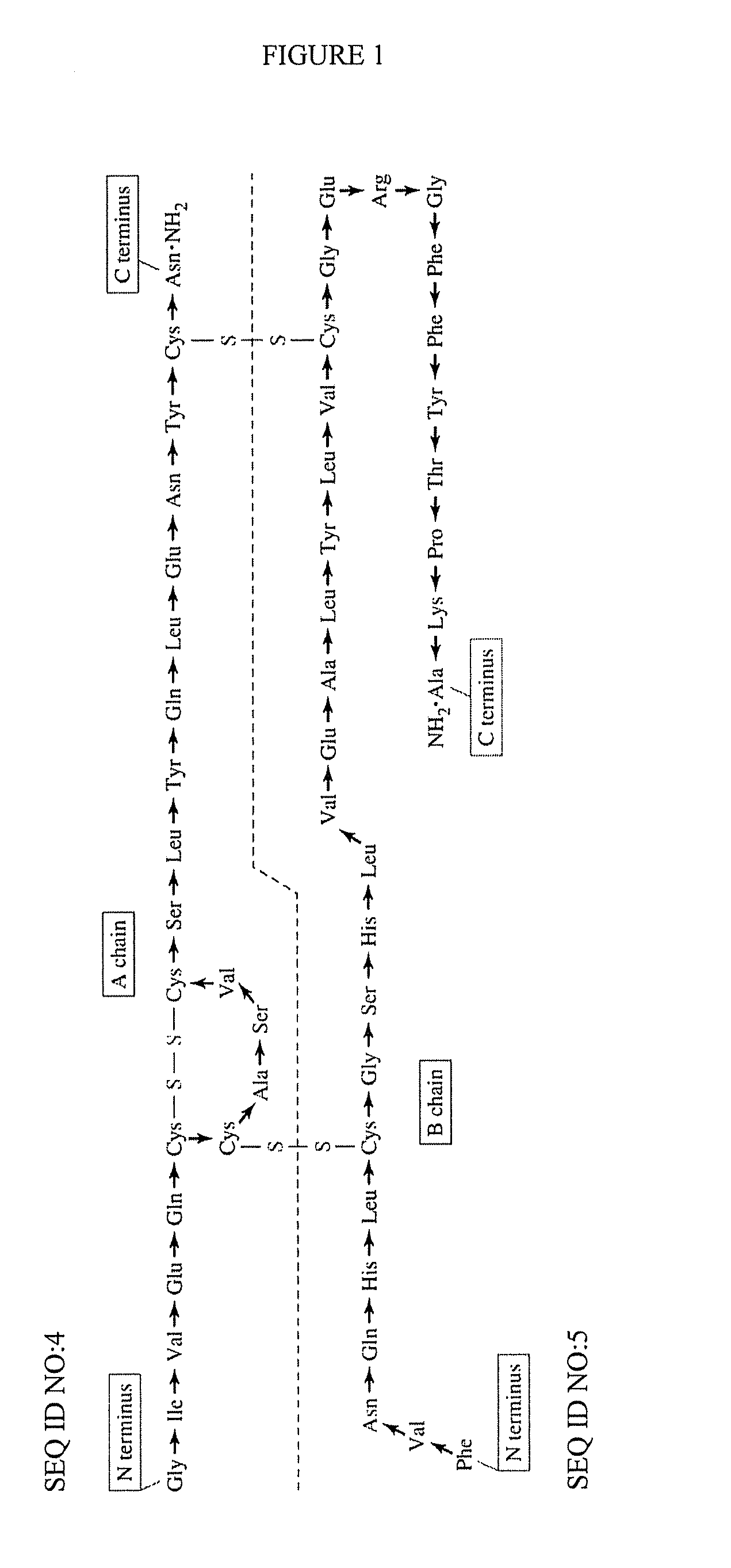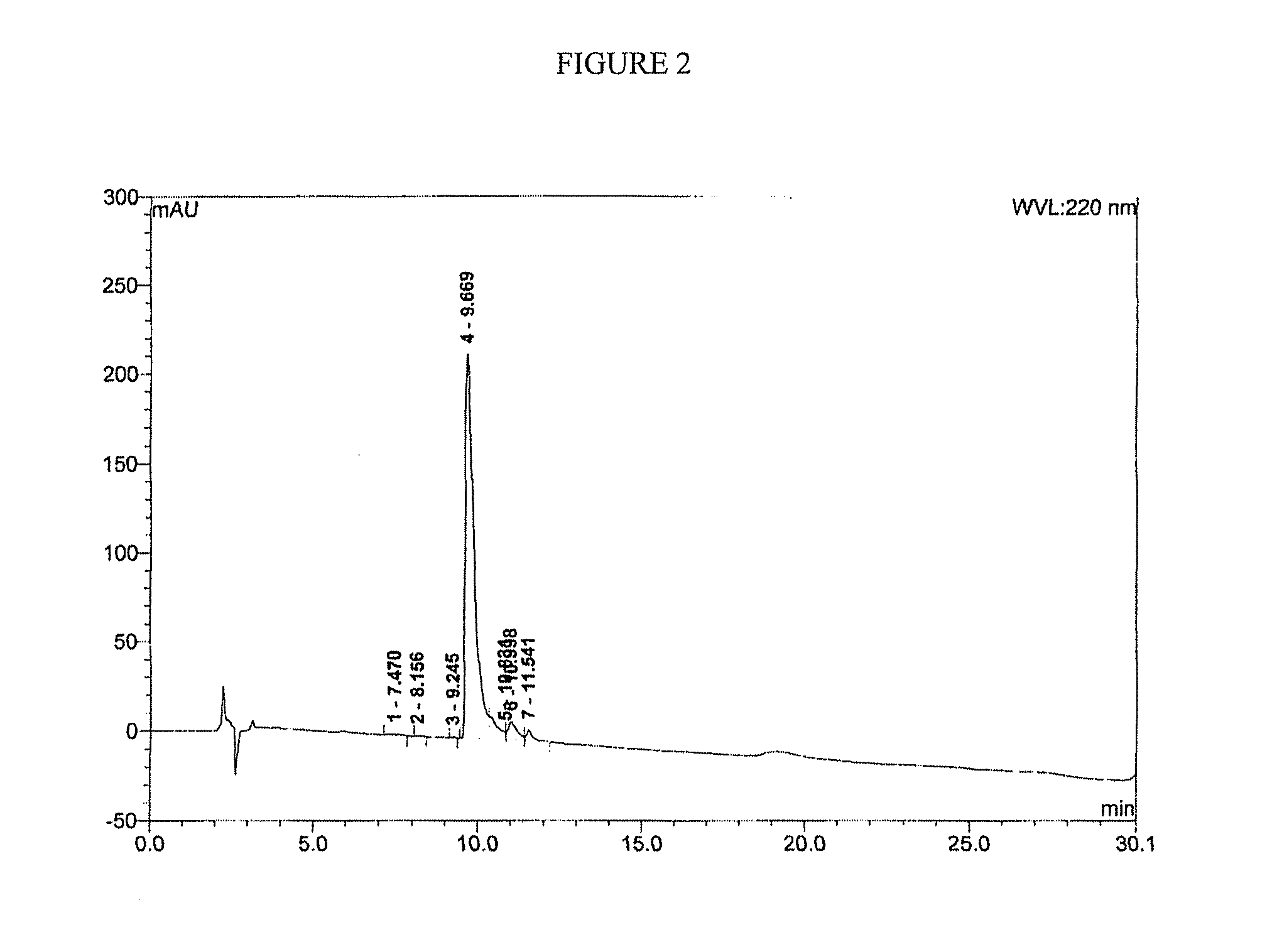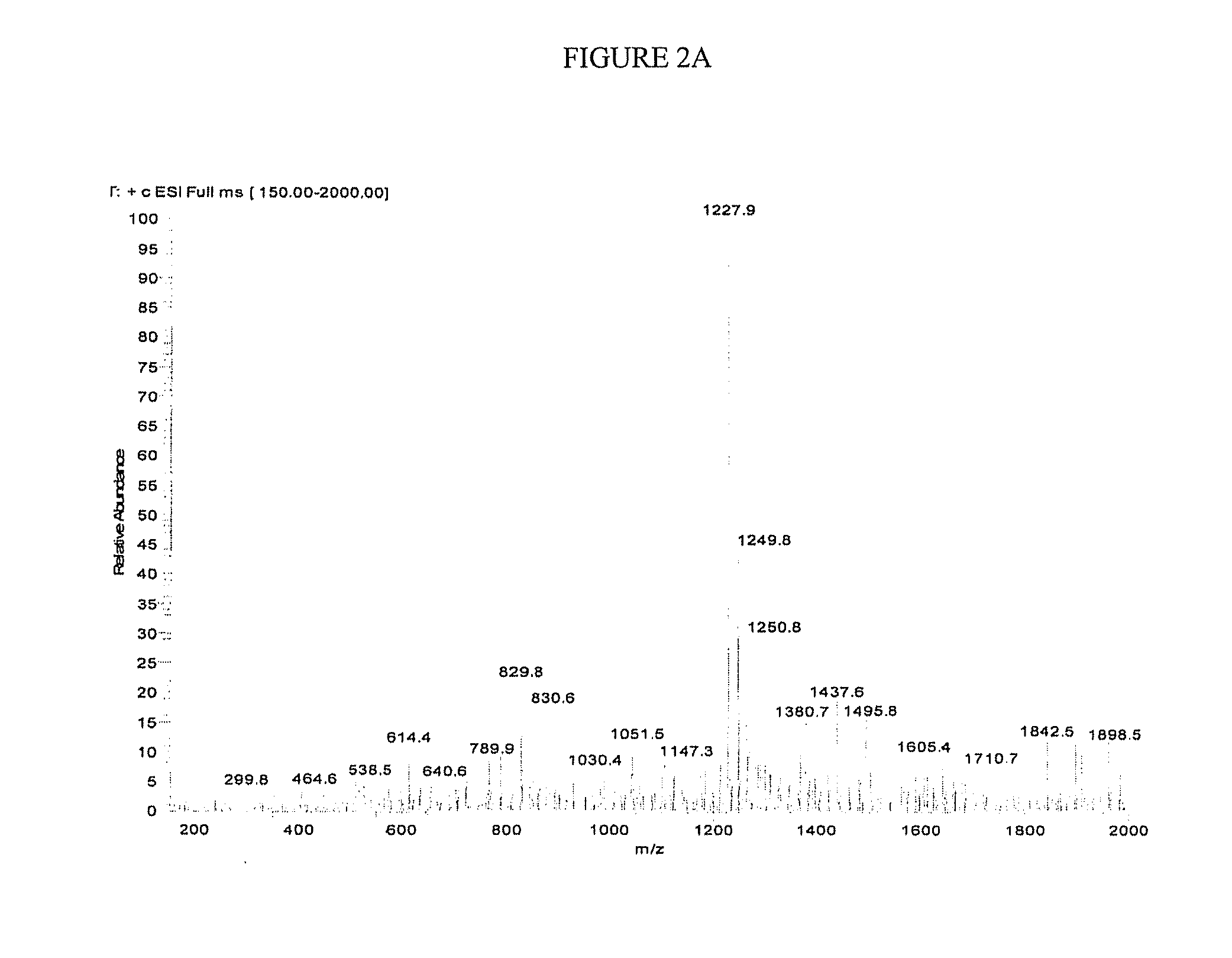Composition and Method for Increasing Cell Permeability of a Compound
a cell permeable and compound technology, applied in the direction of peptide/protein ingredients, parathyroid hormones, metabolic disorders, etc., can solve the problems of not easily crossing the biological membrane, damage to cells, and unable to readily carry biologically active molecules to the interior of cells, so as to improve the uptake of said compound
- Summary
- Abstract
- Description
- Claims
- Application Information
AI Technical Summary
Benefits of technology
Problems solved by technology
Method used
Image
Examples
examples of synthesis
[0196]Initial synthesis was of the 11-mer CPS peptide in which its C-terminal end was an N-hydroxysuccinimide (NHS) ester. This CPS-OSu peptide was expected to be highly reactive to the amine groups of human insulin and thus facilitate the conjugation reactions between CPS and Insulin. It was determined that the 11-mer peptide was transformed to its NHS ester derivative, and it became highly unstable as it tended to react with its own amine groups in the N-terminal region internally. As a result, this CPS-OSu activated ester was cyclized via an internal amide bond. To overcome this side-reaction, a derivative of the CPS-OSu peptide in which all three amine groups of this peptide were protected by a Boc group (tert-Butyloxycarbonyl) was also made. This amine-protected peptide showed a poor solubility in aqueous solutions to be purified by HPLC methods.
[0197]To avoid the head-to-tail internal amide bond cyclization of the CPS-OSu activated ester as discussed above, the design of the C...
PUM
| Property | Measurement | Unit |
|---|---|---|
| Composition | aaaaa | aaaaa |
| Permeability | aaaaa | aaaaa |
Abstract
Description
Claims
Application Information
 Login to View More
Login to View More - R&D
- Intellectual Property
- Life Sciences
- Materials
- Tech Scout
- Unparalleled Data Quality
- Higher Quality Content
- 60% Fewer Hallucinations
Browse by: Latest US Patents, China's latest patents, Technical Efficacy Thesaurus, Application Domain, Technology Topic, Popular Technical Reports.
© 2025 PatSnap. All rights reserved.Legal|Privacy policy|Modern Slavery Act Transparency Statement|Sitemap|About US| Contact US: help@patsnap.com



